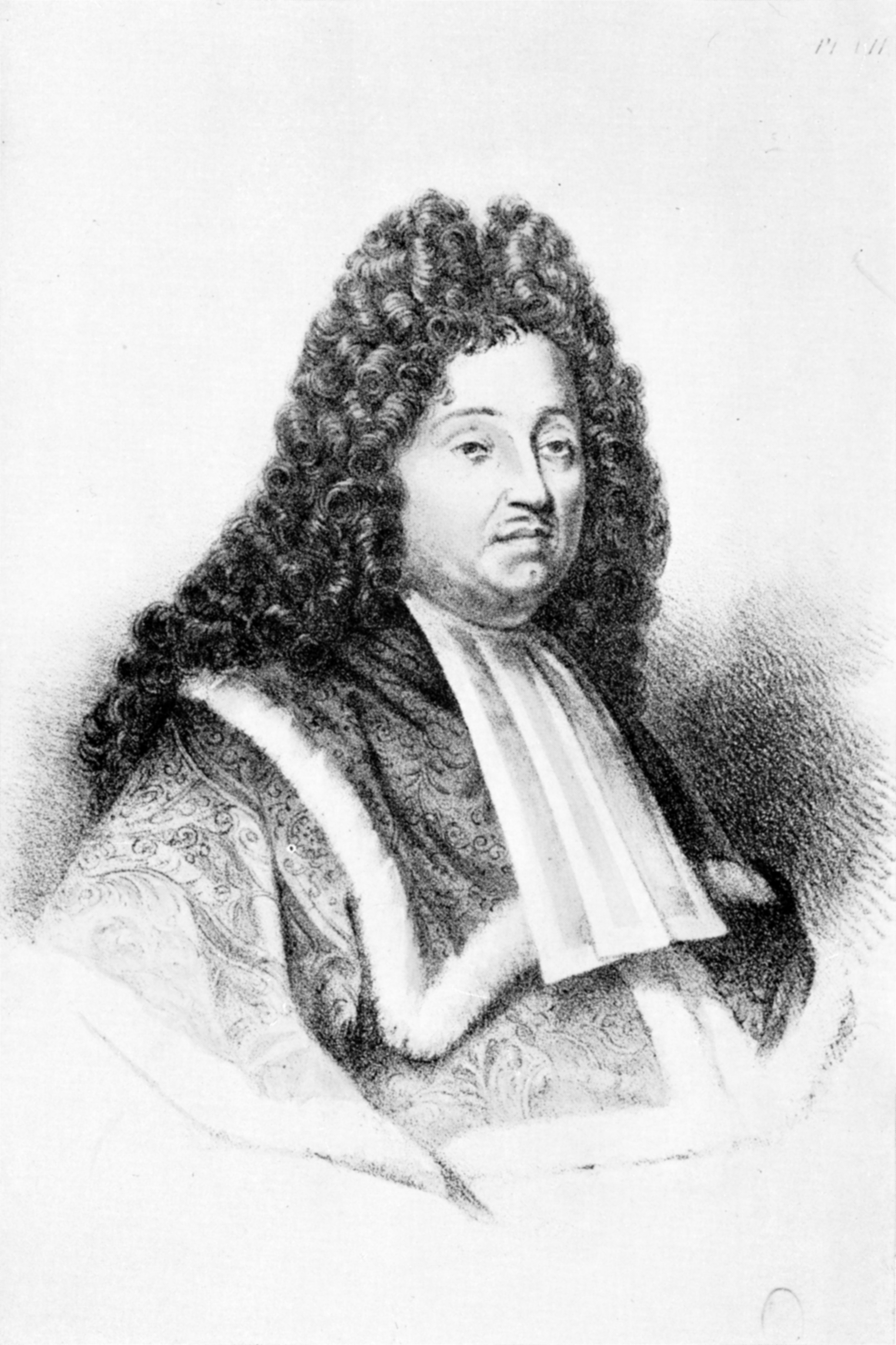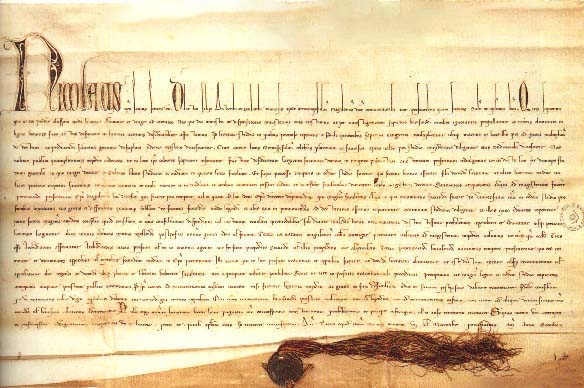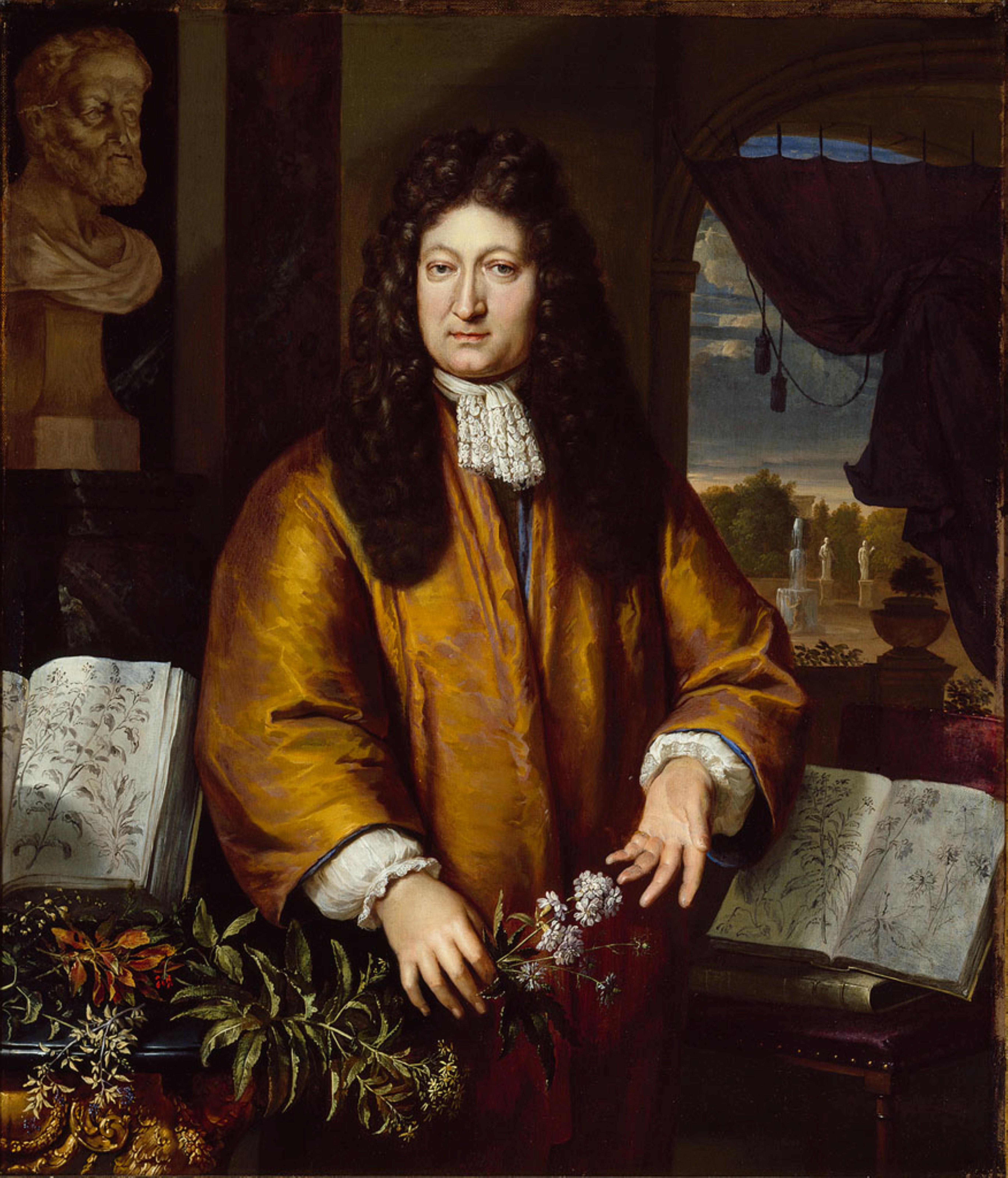|
Magnol
Pierre Magnol (8 June 1638 – 21 May 1715) was a French botanist. He was born in the city of Montpellier, where he lived and worked for most of his life. He became Professor of Botany and Director of the Royal Botanic Garden of Montpellier and held a seat in the Académie Royale des Sciences de Paris for a short while. He was one of the innovators who devised the botanical scheme of classification. He was the first to publish the concept of plant families as they are understood today, a natural classification of groups of plants that have features in common. Youth and education Pierre Magnol was born into a family of apothecaries (pharmacists). His father Claude ran a pharmacy as did his grandfather Jean Magnol. Pierre's mother was from a family of physicians. Pierre's older brother Cesar succeeded his father in the pharmacy. Pierre, being one of the younger children, had more freedom to choose his own profession, and wanted to become a physician. He had become devoted to nat ... [...More Info...] [...Related Items...] OR: [Wikipedia] [Google] [Baidu] |
Montpellier
Montpellier (, , ; oc, Montpelhièr ) is a city in southern France near the Mediterranean Sea. One of the largest urban centres in the region of Occitania, Montpellier is the prefecture of the department of Hérault. In 2018, 290,053 people lived in the city, while its metropolitan area had a population of 787,705.Comparateur de territoire INSEE, retrieved 20 June 2022. The inhabitants are called Montpelliérains. In the Middle Ages, Montpellier was an important city of the (and was the birthplace of ), and ... [...More Info...] [...Related Items...] OR: [Wikipedia] [Google] [Baidu] |
University Of Montpellier
The University of Montpellier (french: Université de Montpellier) is a public research university located in Montpellier, in south-east of France. Established in 1220, the University of Montpellier is one of the oldest universities in the world. The university was split into three universities (the University of Montpellier 1, the University of Montpellier 2 and the Paul Valéry University Montpellier 3) for 45 years from 1970 until 2015 when it was subsequently reunified by the merger of the two former, with the latter, now named Paul Valéry University, Montpellier III remaining a separate entity. History The university is considerably older than its formal founding date, associated with a papal bull issued by Pope Nicholas IV in 1289, combining all the centuries-old schools into a university, but the first statutes were given by Conrad of Urach in 1220. It is not known exactly when the schools of liberal arts were founded that developed into the Montpellier faculty ... [...More Info...] [...Related Items...] OR: [Wikipedia] [Google] [Baidu] |
Languedoc
The Province of Languedoc (; , ; oc, Lengadòc ) is a former province of France. Most of its territory is now contained in the modern-day region of Occitanie in Southern France. Its capital city was Toulouse. It had an area of approximately 42,700 square kilometers (16,490 square miles). History The Roman province of Gallia Narbonensis fell to the Visigothic Kingdom from the 5th to the 8th centuries. Occupied briefly by the Emirate of Córdoba between 719 and 759, it was conquered and incorporated into the Kingdom of the Franks by Pippin the Short in 759 following the Siege of Narbonne. Under the Carolingians, the counts of Toulouse were appointed by the royal court. Later, this office became hereditary. Part of the territory where Occitan was spoken came to be called '' langue d'oc'', ''Lengadòc'' or Languedoc. In the 13th century, the spiritual beliefs of the area were challenged by the See of Rome and the region became attached to the Kingdom of France following t ... [...More Info...] [...Related Items...] OR: [Wikipedia] [Google] [Baidu] |
Barcelona
Barcelona ( , , ) is a city on the coast of northeastern Spain. It is the capital and largest city of the autonomous community of Catalonia, as well as the second most populous municipality of Spain. With a population of 1.6 million within city limits,Barcelona: Población por municipios y sexo – Instituto Nacional de Estadística. (National Statistics Institute) its urban area extends to numerous neighbouring municipalities within the and is home to around 4.8 million people, making it the [...More Info...] [...Related Items...] OR: [Wikipedia] [Google] [Baidu] |
Jan Commelin
Jan Commelin (23 April 1629 – 19 January 1692), also known as Jan Commelijn, Johannes Commelin or Johannes Commelinus, was a botanist, and was the son of historian Isaac Commelin; his brother Casparus was a bookseller and newspaper publisher. Jan became a professor of botany when many plants were imported from the Cape and Ceylon and a new system had to be developed. As alderman of the city, together with burgomaster Johan Huydecoper van Maarsseveen he led the arrangement of the new botanic garden Hortus Medicus, later becoming Hortus Botanicus. He cultivated exotic plants on his farm 'Zuyderhout' near Haarlem. Commelin amassed a fortune by selling herbs and drugs to apothecaries and hospitals in Amsterdam and other Dutch cities. Commelin did a great deal of the work in publishing ''Hortus malabaricus'' of Rheede, and ''Nederlandse Flora'' published in 1683 as well as contributing commentaries to the second and third volumes. He also prepared for publication "Horti Medici Amst ... [...More Info...] [...Related Items...] OR: [Wikipedia] [Google] [Baidu] |
Leiden
Leiden (; in English and archaic Dutch also Leyden) is a city and municipality in the province of South Holland, Netherlands. The municipality of Leiden has a population of 119,713, but the city forms one densely connected agglomeration with its suburbs Oegstgeest, Leiderdorp, Voorschoten and Zoeterwoude with 206,647 inhabitants. The Netherlands Central Bureau of Statistics (CBS) further includes Katwijk in the agglomeration which makes the total population of the Leiden urban agglomeration 270,879, and in the larger Leiden urban area also Teylingen, Noordwijk, and Noordwijkerhout are included with in total 348,868 inhabitants. Leiden is located on the Oude Rijn, at a distance of some from The Hague to its south and some from Amsterdam to its north. The recreational area of the Kaag Lakes ( Kagerplassen) lies just to the northeast of Leiden. A university city since 1575, Leiden has been one of Europe's most prominent scientific centres for more than four centuries ... [...More Info...] [...Related Items...] OR: [Wikipedia] [Google] [Baidu] |
Petrus Houttuyn
Petrus Houttuyn (18 June 1648, Amsterdam – 10 January 1709, Leiden), often cited as Peter Hotton, was a Dutch botanist and medical professor of medicine and botany at Leiden University. As professor of botany, he was ex officio supervisor of the university's botanic garden and was given an official residence and an allowance for foreign correspondence and the exchange of seeds and plants. He studied medicine in Leiden, obtaining his doctor's degree in 1672. In 1695 he succeeded Paul Hermann as professor of botany at the University of Leiden. Houttuyn was a member of the Leopoldina and a fellow of the Royal Society of London. He was succeeded in turn by Herman Boerhaave. The genus '' Hottonia'' (family Primulaceae The Primulaceae , commonly known as the primrose family (but not related to the evening primrose family), are a family of herbaceous and woody flowering plants including some favourite garden plants and wildflowers. Most are perennial though som ...) is named in h ... [...More Info...] [...Related Items...] OR: [Wikipedia] [Google] [Baidu] |
Paul Hermann (botanist)
Paul Hermann (30 June 1646, Halle – 29 January 1695, Leiden) was a German-born physician and botanist who for 15 years was director of the Hortus Botanicus Leiden. Born in Halle, Saxony-Anhalt, Germany, Paul Hermann was the son of Johann Hermann, a well-known organist, and Maria Magdalena Röber, a clergyman's daughter. Hermann studied theology and medicine in Wittenberg and botany in Leipzig. After graduating from Europe's finest medical school, Padua in 1670, he was then engaged by the Dutch East India Company and went to Ceylon (now Sri Lanka) as a Ship's Medical Officer. He was in their employ from 1672 to 1677. During his stay there, he made a scientific collection of this island's plants and other organisms. He was then offered the job at Leiden and took up the Chair of Botany at the University of Leiden in 1679 and took up his residence in 1680 at Leiden where he spent the rest of his professional life. He immediately set to making it the finest botanical garden in Eur ... [...More Info...] [...Related Items...] OR: [Wikipedia] [Google] [Baidu] |
James Petiver
James Petiver (c. 1665 – c. 2 April 1718) was a London apothecary, a fellow of the Royal Society as well as London's informal Temple Coffee House Botany Club, famous for his specimen collections in which he traded and study of botany and entomology. He corresponded with John Ray and Maria Sibylla Merian. Some of his notes and specimens were used by Carolus Linnaeus in descriptions of new species. The genus '' Petiveria'' was named in his honour by Charles Plumier. His collections were bought by Sir Hans Sloane and became a part of the Natural History Museum. Life Born somewhere between 1663 and 1665 in Hillmorton, Warwickshire to James (baptism record from Hillmorton has "Pettyfer", 22 February 1635) and Mary née Elborow, the family moved to London soon after where his father became a haberdasher. After the death of his father in 1676, Petiver was sent to Rugby Free School, sponsored by his maternal grandfather Richard Elborow. Petiver later stated that "I have often bewa ... [...More Info...] [...Related Items...] OR: [Wikipedia] [Google] [Baidu] |
William Sherard
William Sherard (27 February 1659 – 11 August 1728) was an English botanist. Next to John Ray, he was considered to be one of the outstanding English botanists of his day. Life He is still a little-known figure of that era coming as he did from humble origins. However, he worked hard and his education allowed him to rise in society. Sherard was born in Bushby, Leicestershire and studied at St John's College, Oxford, from 1677 to 1683. He studied botany from 1686 to 1688 in Paris under Joseph Pitton de Tournefort and was a friend and pupil of Paul Hermann in Leyden from 1688 to 1689 who also studied with Tournefort at this time. In 1690 he was in Ireland as tutor to the family of Sir Arthur Rawdon at Moira, County Down. Sherard was British Consul at Smyrna from 1703 to 1716, during which time he accumulated a fortune. When he returned to England he became a patron of other naturalists, including Johann Jacob Dillenius, Pietro Antonio Micheli, Paolo Boccone and Mark Catesby. H ... [...More Info...] [...Related Items...] OR: [Wikipedia] [Google] [Baidu] |







